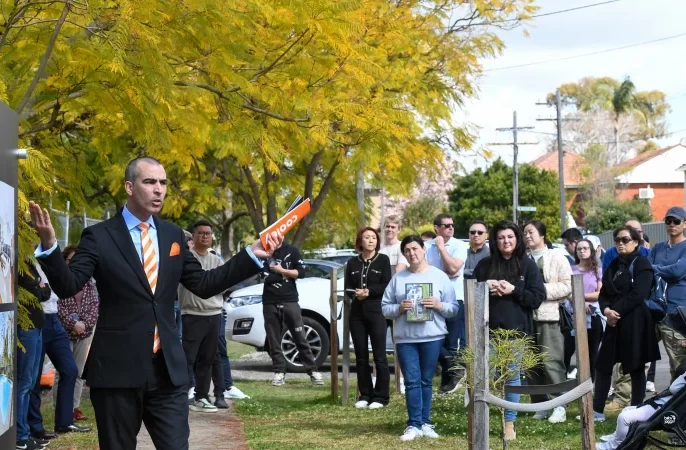
Australia’s national shared equity scheme will not go far enough to make a serious dent in the housing shortage, and risks helping some people who had a chance of buying anyway, experts warn.
The new Help to Buy scheme will start next year and allow a home purchase with a low 2 per cent deposit. Under a shared equity model, the government co-purchases a 30 per cent to 40 per cent stake in the home, and the buyer takes out a loan for the rest.
Experts back the idea of a shared equity model to help those without intergenerational wealth transfer to achieve home ownership, but raised issues with the design. The program will cover 30 per cent of the cost of an established home, or 40 per cent of a new build for 40,000 home buyers, over the next four years.
University of Sydney economics Professor Stephen Whelan said this was only a modest number of people, and the scheme would not add major supply to the housing market.
A shortage of affordable homes has been blamed for the housing crisis as demand outstrips supply.
The scheme’s modest home price caps meant buyers would likely be pushed further out of capital cities, he said.
The price caps are $950,000 in Sydney, $850,000 in Melbourne, $700,000 in Brisbane, $600,000 in Perth, and less in regional areas.
That compared to the median house price in Sydney of $1,538,017 in the June quarter on Domain data, while Melbourne’s was $1,027,996, Brisbane’s $823,272 and Perth’s median was $690,468.
“Caps in terms of the value of a home [mean] it’s not going to be in the desirable inner-city areas where prices are high and you have close access to amenities like transport, childcare and schools,” Whelan said.
“You also might get locked into a loan, or a property because of negative equity when you go to sell.”
Grattan Institute economic program policy director Brendan Coates backed the scheme as a support for first home buyers and older Australians heading into retirement.
“Older women that lose a home during a separation or divorce, when assets are split, and less than half buy again within 10 years,” Coates said. “Owning a home is very important for security in retirement.”
But he believed the income thresholds were too high. Singles can earn $90,000 a year, and couples $120,000, and still qualify.
The Grattan Institute previously recommended income thresholds below $60,000 for singles and $90,000 for couples, as 51 per cent of workers would be eligible under those circumstances and it would help those with the least chance of buying independently.
A similar issue emerged in a shared equity scheme in the UK that ran from 2013 until March this year.
A 2019 review of the Help to Buy: Equity Loan Scheme by the UK’s National Audit Office found although it helped more people into home ownership, there were downsides.
Almost a third (31 per cent) of participants could have bought anyway without help from the scheme, and 4 per cent of participants earned £100,000 a year ($196,000 AUD).
The English scheme offered to share up to 40 per cent of the cost of building a new home only, up to a maximum value of £600,000.
The review found buyers were pushed further out of London given that house price cap, and some who had sold soon after building were in negative equity.
Independent economist Saul Eslake said schemes like this always pushed house prices higher.
“We have 60 years of history that says anything that allows Australians to buy a house, or more expensive houses, makes housing more expensive,” Eslake said.
“We’ve had these types of allowances and schemes for decades and the amount of home ownership in Australia has continued to drop since the 1960s.
“It’s just resulted in more expensive houses.”
Although it was adding to house prices, Eslake said WA’s Keystart scheme, which has been around since 1989, has been quite successful.
The scheme is now self-funding, and lends to owner-occupiers on a low income, who have a 2 per cent deposit and can avoid lender’s mortgage insurance. Other states including Victoria have similar programs.
Federal Housing Minister Julie Collins said the government was working with states and territories that had successfully run shared equity schemes, such as WA.
The government plans to add to housing supply, setting a national target to build 1.2 million homes over the next 5 years.
“The Albanese government is working with states and territories to deliver the Help to Buy Scheme, supporting up to 40,000 low- and middle-income families to purchase a home of their own,” Collins said.
“This will bring home ownership back into reach for thousands of Australians who have been locked out of the housing market. This is one element of our government’s broad and ambitious housing agenda to help address Australia’s housing challenges,” she said.
Sourced from domain.com.au




